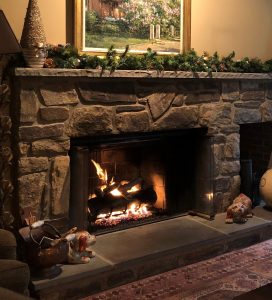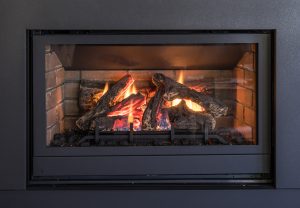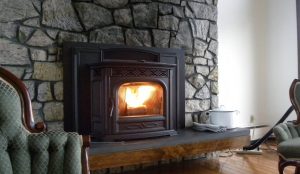Tips to get your fireplace & chimney ready for the cold
Many people use the changing seasons as an opportunity to create new decoration ideas for their fireplace hearths. It is also important to make sure that any Washington DC chimney repairs are completed before the cold weather arrives. Chimneys, along with fireplaces and wood stoves are involved in close to half (42%) of fires related to home-heating systems. Before you begin to use your fireplace. You can follow some basic safety steps to get your chimney and fireplace ready for the cold weather in Washington DC.
 Here are some key steps to take to prepare your chimney and fireplace for the cold weather:
Here are some key steps to take to prepare your chimney and fireplace for the cold weather:



 Here are some key steps to take to prepare your chimney and fireplace for the cold weather:
Here are some key steps to take to prepare your chimney and fireplace for the cold weather:
Chimneys Maintenance Tips
Hire a Professional Chimney Sweep: As emphasized in the beginning, proper maintenance prevents chimney fires. Hiring a professional chimney sweep it the first and most important step. The National Fire Protection Association advises that you have your chimney swept once per year by a professional chimney repair company. Not only will a professional chimney sweep get rid of soot and debris, which could potentially catch fire, they will also check for damage to your chimney. The chimney liners and other structures will be checked for cracks, leaks, missing mortar, loose bricks and other hazards. Cap Your Chimney: If your chimney does not have a chimney cap, then you need to have one installed. Chimney caps which will protect your structure from unwanted animals, such as birds and squirrels, and will also keep out rain and debris. A cap with wire-mesh sides covering the chimney’s top will keep these things out. If your cap is missing, replace it. If your cap has suffered any damage, be sure to make all the necessary repairs.
Tips for Wood Burning Fireplace
Cleaning: If you have a wood burning fireplace, you need to make sure that you properly clean it before the heating season. In particular, be sure to clean the firebox using a vacuum. You should also remove soot that has accumulated on the fireplace’s walls or the chimney’s opening. Using Your Wood Burning Fireplace: There are also some basic tips to follow when it comes to choosing the right firewood, preparing the firewood, building a fire, and ensuring safety. Choose Seasoned Hardwood: It is best to burn wood that is dense and seasoned, for example, oak. This wood should have been split and have been stored in a place that is dry and high for no less than six months. By contrast, green wood and softwoods, including pine, produce greater amounts of creosote, a byproduct of combustion that is flammable. If allowed to build-up and the internal flue temperature reaches a certain level, there is a high risk of a chimney fire, according to the Chimney Safety Institute of America. Preparing the Hardwood: If you choose to cut your hardwood yourself, you want to adhere to some core principles. First, the wood needs to be split so that the pieces will fit into your fireplace. As well, keep your pieces to no larger than six inches in diameter, in turn helping them to burn correctly. Regarding stacking the wood, the split-side should be positioned downward and not directly on the ground. Also, the wood should be kept covered, so as not to suffer damage from rain or snow. It is also important that you store the softwood for a minimum duration of six months, and hardwood for at least 12 months. Testing the Moisture: Make sure that you buy a wood moisture meter. Aim for a moisture reading no higher than 20%, which means the wood is dried enough. Too much moisture will result in the wood not burning properly. Consider Buying Local Wood: If you decide not to cut your wood, or realize it’s not feasible for you to store it for an extended period, you may want to consider buying local wood. Be sure to find out whether your state or city has any special ordinances relating to firewood. Avoid Overloading Your Chimney: As we mentioned before, creosote is a highly flammable byproduct of combustion. Large fires produce higher amounts of smoke, and in turn, greater amounts of creosote buildup. By comparison, smaller fires produce less smoke and less creosote. For this reason, you want to avoid overloading your chimney. The risk of cracking your chimney lining also increases with a larger fire that’s higher in heat. Building Your Fire: Logs should always be placed close to the rear of the fireplace and should be put on a metal grate. Additionally, make sure to use kindling to start a fire as opposed to flammable liquids. Also, make sure that the fire has air and that you keep ample space between the logs. Practice Safety with a Spark Guard: Another important measure is to use a spark guard, which serves as a buffer preventing embers from coming out of the firebox. Typically this is mesh metal screen or sometimes glass doors. Move Flammable Objects Away from the Area: It is critical that you move any flammable objects far away from either your wood stove or fireplace. Use a Fan to Circulate the Air in Your House: You may want to consider running your ceiling fans on low speed to circulate the warm air in your home generated by your fireplace.
Tips for Gas Fireplaces
If you have a gas fireplace, you don’t have to worry about removing and cleaning up ash. While there is typically less maintenance involved with gas fireplaces, there are still some basic steps you should take with your gas fireplace in preparation for the colder weather and the heating season: Clean the glass: Consult your owners manual, and make sure you are using a cloth that is soft and the right type of cleaner. You do not want to scratch the glass, which increases the risk that the high heat could result in it shattering. Use a Vacuum to Clean the Inside of Your Fireplace Inspect Your Fireplace Thoroughly: Any damage, including cracks or rust, should be appropriately dealt with, and the parts that are affected should be replaced. You can find additional gas fireplace safety tips here.

My sister would like to have a chimney build in her house because this is where the fireplace’s smoke comes out. Thank you for sharing here as well the importance of removing its vent cap’s dirt. It’s also a good thing that you clarified here the advantage of cleaning its gasket too.